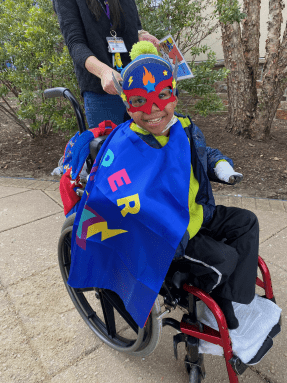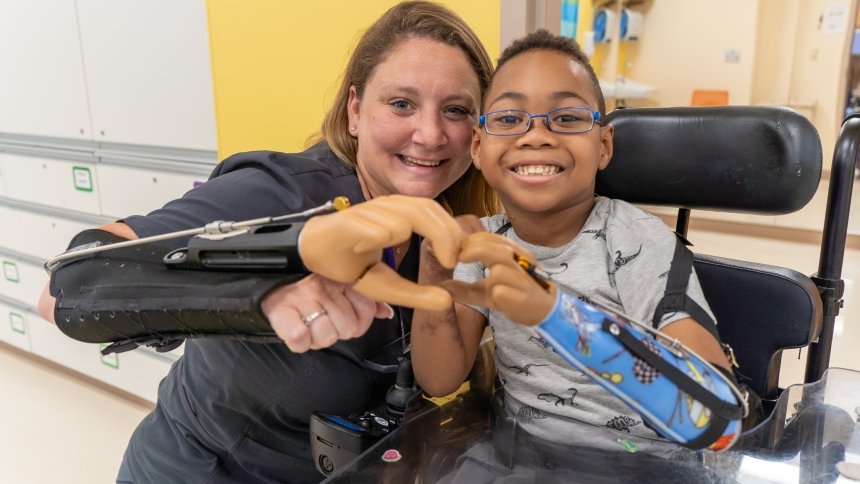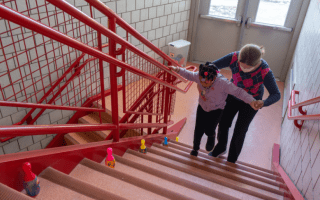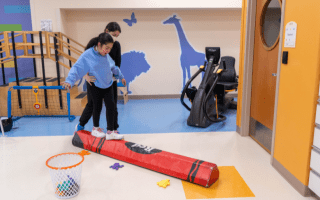Steffon's Unbreakable Spirit
Last September, five-year-old Steffon endured a life-threatening health crisis. Born with sickle cell disease, Steffon experiences periods of extreme pain, referred to as pain crises, at least once a year, a challenging but common symptom of the complicated disease. This time, however, was different.
Sickle cell disease is the most common inherited blood disease in the United States and is characterized by crescent-shaped red blood cells that are unable to move easily throughout the body, often becoming occluded and blocking blood flow to vital organs. In Steffon’s case, this led to acute illness.
Steffon’s mom, Veronica, remembers that Saturday last fall when Steffon came down with a fever but then deteriorated so quickly that an ambulance was called to rush him to the hospital.
"To relive that moment," she said, "for Steffon, there was hardly any pulse."

Steffon had developed an invasive streptococcal pneumococcus infection with sepsis, meningitis, and septic shock. Steffon consequently developed dry necrotic gangrene of his fingers and toes. When his condition finally stabilized, Steffon was admitted to Blythedale Children’s Hospital for comprehensive wound care and intensive rehabilitation to help restore his function and provide him with new ways to access his world.
Upon admission, Steffon was experiencing tremendous pain in his extremities due to the necrosis. Blythedale’s specialized complex wound rehabilitation team includes certified wound care nurses, pediatricians, physiatrists, psychologists, Child Life specialists, rehabilitation nurses, dietitians, and the largest hospital-based department of pediatric therapists (physical, occupational, and speech) in New York State. These specialists provide acute, comprehensive inpatient complex wound rehabilitation to children who are admitted from regional tertiary care centers.
Kathryn Hepp, OTR/L worked with Steffon to maintain function throughout his body and help him relearn how to use his hands and feet to participate in all the typical activities a five-year-old would.

“My job as his occupational therapist was to prevent further loss of function of his hands,” said Hepp. “And that often meant some really uncomfortable stretching of the skin around his hands and arms. But despite knowing that was coming, [Steffon] always greeted me with a smile and a hug.”
Lily Chan, CPNP oversaw much of Steffon’s wound care, noting his strength and perseverance showed through in his sessions.
“If you can imagine, you’re a little kid and you have this hand that you used to use,” she said. “And now all of the sudden it’s just associated with pain.”
The team found that allowing Steffon to participate in his wound care helped him to regain control over a little bit of his care.
That level of control helped Steffon look to the future.
“We have the technology, incredible technology nowadays that can basically get him as functional as possible, walking, using the hand, through the use of prosthetics,” said Chan.
Steffon was discharged from Blythedale’s inpatient hospital and admitted to its Day Hospital in February, where he continues to receive comprehensive medical care while also attending kindergarten at Mt. Pleasant Blythedale School.
Steffon has remaining function in his right hand and works daily in his therapies to maintain that function. He has been fitted for prosthetics on both of his lower legs, and last month he was fitted for a body-powered prosthetic for his left hand.
Ruth Alejandro, MD, FAAPMR is a pediatric physiatrist at Blythedale who strives to help children become functional again and help improve their quality of life.
“This is where we come in to say you’ve had your life saved in the acute stage, but we’re saving your life in terms of quality,” she said. “And how do you reintegrate into the community? How do we reintegrate Steffon into school for learning, to doing activities?”

Dr. Alejandro also explains to her patient families that prostheses are artificial devices that provide an extension of a child’s limb to be able to provide more function for them.
There are many types of prostheses including passive, body-powered, and electric. For Steffon, at his age, the best fit was a body-powered device.
Steffon works daily in his therapies to problem-solve how to incorporate his new prosthetic into daily activities, particularly those that require using both hands. During his occupational therapy sessions, Kathryn will often wear a simulated upper extremity prosthetic to better understand Steffon’s movements in order to help him gain the most function as possible.
“It is really exciting,” she said. “You are never quite sure how the child is going to react to something as new as getting a prosthetic. Just to see him very easily pick up on the skill to use it to play really brought a smile to my face, but it was even more exciting to see the smiles on his mom’s face.”




